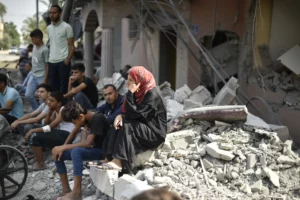The United Nations Conference on Trade and Development (UNCTAD) reports a daunting recovery journey for the Gaza Strip’s economy.
If the conflict between Israel and Hamas ended today, decades and billions of dollars would be needed for Gaza’s economic revival.
In 2023 alone, the region’s GDP per capita fell by 26.1%. This stark decline was highlighted in a detailed UNCTAD report released on January 31, 2024.
Should the current military actions stop now and reconstruction begin immediately, Gaza faces a long road to recovery.
It would take until 2092 to reach its 2022 GDP levels, based on the annual growth rate of 0.4% from 2007 to 2022.
This timeline reflects the enormity of the economic challenges Gaza confronts.

The report emphasizes that Gaza’s economic restoration requires a financial commitment much larger than the $3.9 billion from the 2014 conflict.
An international collaborative effort is essential for restoring the area’s pre-conflict socioeconomic conditions.
In a scenario where the GDP grows 10% annually, Gaza could achieve pre-blockade economic levels by 2035.
This more optimistic outlook still underscores the need for substantial growth and support.
Gaza’s Dismal Socioeconomic Landscape
Gaza’s socioeconomic conditions were extremely poor in 2022 and the first half of 2023.
The report notes that over 2 million residents, confined in a densely populated space, struggled with inadequate water, intermittent electricity, and insufficient sewage systems.
Prior to the latest military operations, two-thirds of Gaza’s population lived in poverty, with 45% of the workforce unemployed.
By December 2023, unemployment had soared to 79.3%. These figures highlight the depth of the economic crisis in Gaza.
The ongoing conflict has displaced 85% of Gaza’s population, halting economic activities and worsening poverty and joblessness.
The UNCTAD report specifies that 37,379 buildings, or 18% of Gaza’s structures, suffered damage or destruction.
The report concludes that breaking the cycle of economic devastation is crucial.
With 80% of the population reliant on international aid, simply returning to the pre-conflict state is not viable.
In short, this situation underscores the critical need for a sustainable, long-term solution to Gaza’s economic and humanitarian crisis.
Download the report here.

